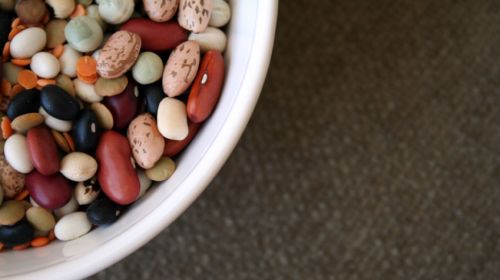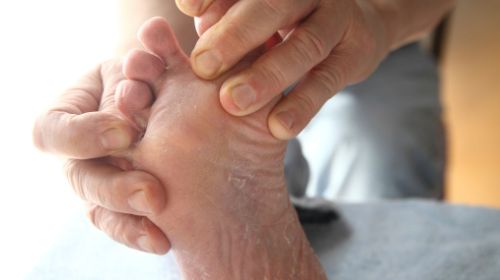Type 2 diabetes often has no symptoms for a long time and therefore goes unnoticed. The reason: The insulin deficiency develops slowly. Even in advanced stages, the symptoms are usually less characteristic than those of type 1 diabetes. Find out here what signs you should know and how to treat them!
- © Getty Images/Kmatta (symbol image)
Quick overview: Frequently asked questions and answers
How do you know you have type 2 diabetes? The early signs of type 2 diabetes can be subtle and include frequent thirst, increased urination, and fatigue. However, many people do not notice any symptoms for a long time, which is why the disease is often discovered accidentally.
What is dangerous about type 2 diabetes? The dangerous thing about type 2 diabetes is that long-term elevated blood sugar levels can cause serious damage to various organs. Possible factors include cardiovascular diseases, kidney damage, visual impairments up to blindness, and nerve damage.
At a glance:
Type 2 diabetes: Symptoms develop gradually
Type 2 diabetes can initially have no symptoms. This is especially the case if blood sugar levels are only temporarily or slightly elevated.
The typical symptoms usually begin gradually over months to years. The disease is often only diagnosed at an older age, which is why it was often referred to as “adult-onset diabetes”. The first signs of so-called prediabetes can be:
- severe increased thirst (polydipsia)
- very frequent urination (polyuria)
- fatigue
Over time, additional symptoms usually appear, such as:
If the doctor’s visit is delayed for a long time, symptoms such as numbness or tingling in the hands and feet or sexual disorders or difficulties – erection problems in men and vaginal dryness in women – may also occur.
What is Type 2 Diabetes?
Type 2 diabetes is a chronic disease in which the pancreas can no longer produce enough insulin or the body’s cells become resistant to insulin, which is known as insulin resistance.
This insulin resistance means that glucose (blood sugar) cannot be effectively absorbed into the body’s cells, causing blood sugar levels in the blood to remain permanently elevated. This is why people often talk about “diabetes”.
Since insulin is needed to regulate blood sugar, its reduced effectiveness leads to the typical symptoms of type 2 diabetes.
Symptoms of type 2 diabetes are often misinterpreted
Since the symptoms of type 2 diabetes mellitus are rather unspecific, they are often misinterpreted. This means that valuable time is lost, during which the first accompanying and consequential damage can develop.
The heart and blood vessels, kidneys, eyes and nerves in particular suffer from a high concentration of blood sugar, and their function can gradually deteriorate. This consequential damage to important organs can already be detected in around one in five affected people at the time of diagnosis and limits the quality of life over time.
Acute consequences of blood sugar imbalance, which are possible in type 1 diabetes in the form of massive dehydration or acidification of the blood with the resulting clouding of consciousness, occur only rarely in type 2 diabetes and tend to occur in older patients.
If medical attention is not sought immediately and fluids or electrolytes are not administered in this situation, a life-threatening diabetic coma can occur.
If typical diabetes symptoms occur, you should consult a doctor.
Treatment of type 2 diabetes
Non-drug measures are planned as basic therapy for type 2 diabetes. This basic therapy includes:
Diabetes training
Nutritional therapy (if necessary with nutritional advice)
Increasing physical activity
possibly nicotine withdrawal
If necessary, elimination of other risk factors such as treatment of increased blood pressure or a lipid metabolism disorder
Medication for type 2 diabetes
In addition, medications can be used to regulate blood sugar levels. Examples of such antidiabetics are:
Biguanides: The most commonly used drug is metformin. It optimizes the utilization of sugar in the cells. However, biguanides must not be used if there are severe kidney problems.
Sulfonylureas: They increase insulin production in the pancreas. Anyone who takes appropriate medication must pay attention to regular meals, otherwise there is a risk of low blood sugar (hypoglycemia).
SGLT-2 inhibitors (Gliflozin): The active ingredients inhibit the reabsorption of glucose in the kidneys and promote the excretion of sugar through the urine.
Gliptins: They work by inhibiting the breakdown of the hormone GLP-1 (glucagon-like peptide 1), which increases insulin release after eating and minimizes the risk of hypoglycemia.
Only if the blood sugar level cannot be brought under control after all these measures do those affected have to inject insulin. However, this is very rare.
Most people with type 2 diabetes benefit from lifestyle changes. Above all, what is important is
- sufficient exercise,
- the reduction of excess weight and
- an improvement in blood lipid levels.
In many cases, such good values can then be achieved that no medication is required.
Knowledge about the disease and the processes in the body plays a crucial role in dealing with the disease and in managing it, especially with type 2 diabetes.
Read more about diet for diabetes.
DMP for diabetes: avoid complications
People with type 2 diabetes can be included in a so-called DMP program. These disease management programs are available for various chronic diseases. Among other things, they support lifestyle changes.
The disease should be controlled and monitored in order to keep the risk of secondary diseases and complications low and to maintain the best possible quality of life for people with type 2 diabetes.
If sugar levels are not adequately adjusted, the vessels and various organs in the body of those affected suffer from the permanently elevated blood sugar levels. Possible secondary diseases with type 2 diabetes are:


